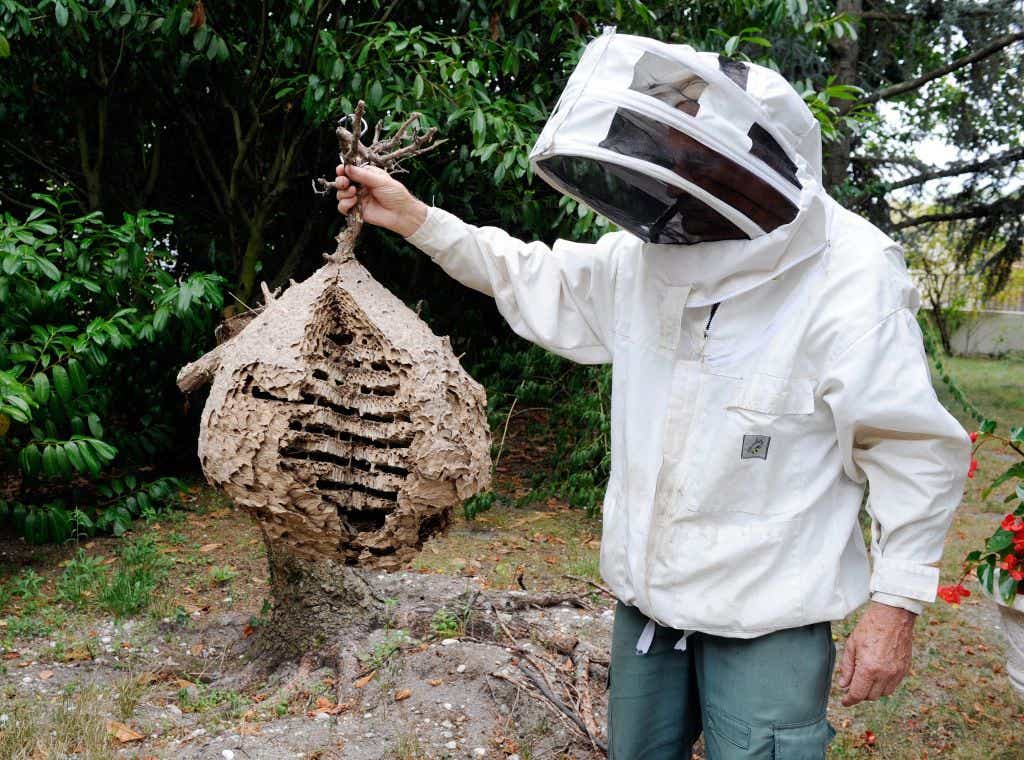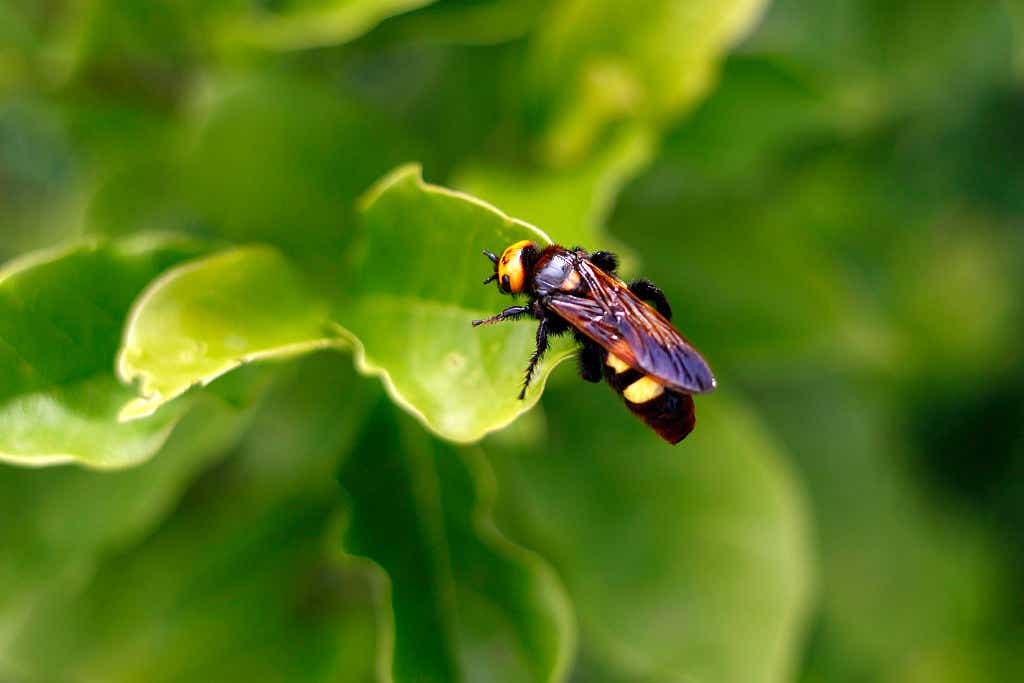A beekeeper in Georgia happened to spot an unusual insect in the U.S. for the first time, and now officials are declaring all-out war on it.
The state Agriculture Department has teamed up with the USDA's Animal and Plant Health Inspection Service and the University of Georgia to eliminate an invasive species known as yellow-legged hornets, which some fear could hurt vital crop production.
“Our partnership is already paying off as our teams come together to apply the science and technology in our response planning,” said Mark Davidson, a deputy administrator with the Animal and Plant Health Inspection Service.
But the hornet hasn't just become a problem in the U.S. — they’ve also become an invasive species in most of Europe and parts of the Middle East.
Wondering how to spot it and why experts are so worried? We’ve got more on that below.
What does a yellow-legged hornet look like and where’s it from?
Also known as an “Asian hornet,” experts say the insect is native to Southeast Asia, and even if you haven’t heard of them, chances are you’ve heard of their close cousin, ‘the “murder hornet.”
As its name suggests, the invasive new species can be identified by its bright yellow legs and dark abdomen that’s striped with the same color and widens toward the insect's rear. But you've got to look closely as they're only the size of a small coin, measuring approximately 1.2 to 3 cm in length.
They’re also described as "social wasp species," meaning you can usually find them hanging from trees in egg-shaped wasps’ nests, which can house up to 6,000 worker bees.

What do you do if you spot a yellow-legged hornet?
If you happen to come across a yellow-legged hornet, experts warn you not to get too close because they're known to sting humans and even pets.
“Yellow-legged hornets can be dangerous, and we encourage Georgians not to approach and maintain a safe distance,” the Georgia Department of Agriculture states.
The good news is deaths are extremely rare: For instance, in China, they caused an estimated 54 deaths over a two-year period.
But you should seriously consider reporting it — in fact, agriculture officials are encouraging you to. You do this by filling out an online form through the Georgia Agriculture Department, where locals can upload a picture of the bug or description, as well as information such as the location of the sighting. You can also email yellow.legged.hornet@agr.georgia.gov.
“Pictures allow us to verify the identification, which is important since some native wasps can look very similar,” the agency states.

Why are agricultural officials worried about yellow-legged hornets?
Yellow-legged hornets are considered dangerous because they prey on honeybees, which produced about $3.2 million worth of honey in 2017 alone.
But they pose a threat not only to honey producers but also to the farming industry as a whole. According to the USDA, honeybees pollinate about $15 billion in crops throughout the U.S. every year.
“About one-third of the food eaten by Americans comes from crops pollinated by honey bees, including apples, melons, cranberries, pumpkins, squash, broccoli, and almonds," the agency said.
So it’s no surprise that officials in Georgia are taking immediate action, given that the state’s economy is especially dependent on agriculture. “The yellow-legged hornet poses a threat to honeybees and other pollinators in our state,” says the state’s Department of Agriculture. “These pollinators play a significant role in Georgia’s agriculture industry, the state's main economic driver, and it is imperative that these invasive pests are tracked and eradicated.”









